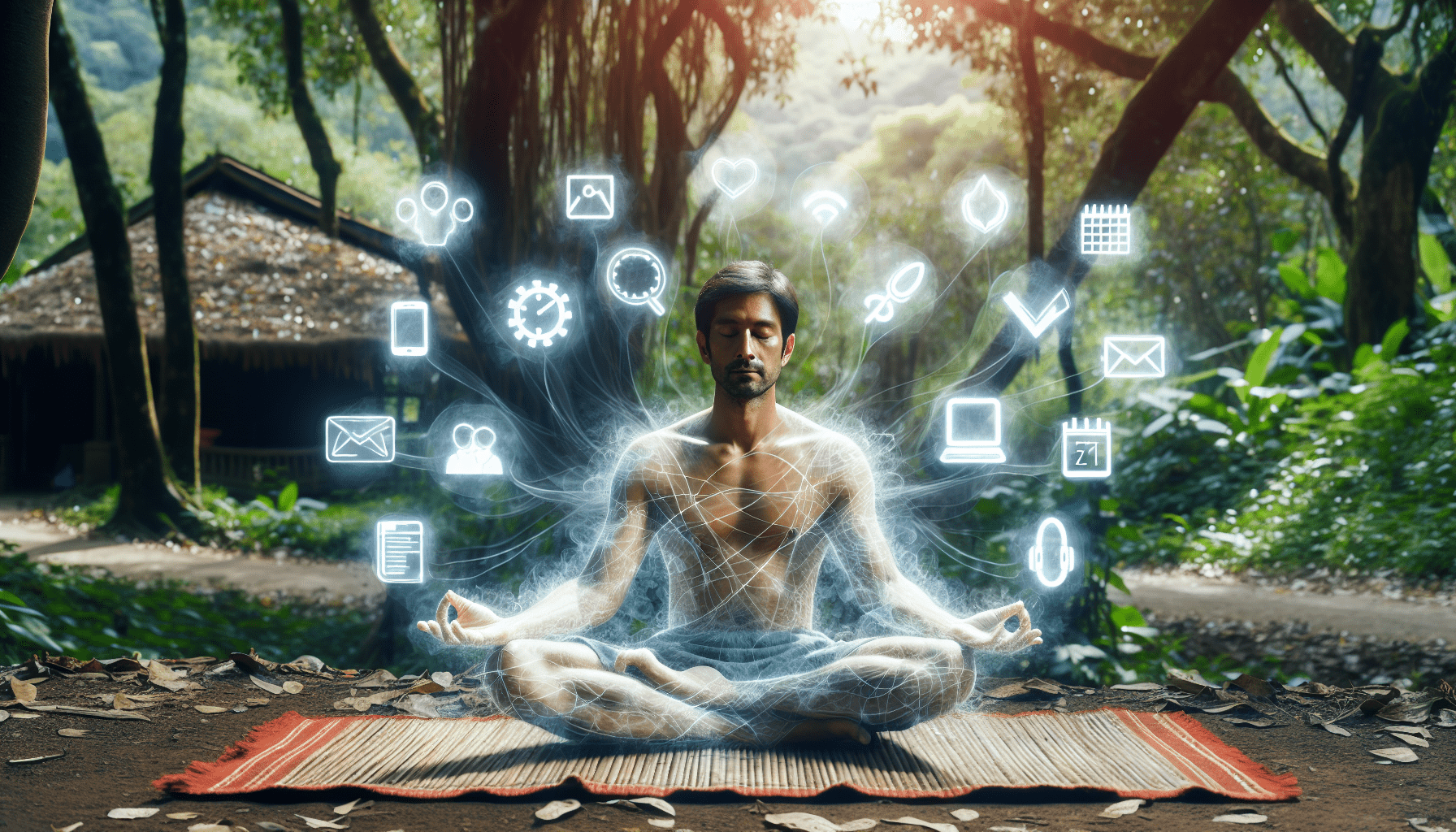In “Multitasking to Better Mindfulness,” you are invited to confront the daily challenge of an overloaded schedule with a fresh perspective on multitasking. Amidst the chaos of balancing lunch, emails, and phone calls, you may find that true efficiency and satisfaction elude you. Multitasking, as revealed through research by MIT’s Dr. Earl Miller, is less about simultaneous productivity and more about ineffective “task-switching,” leading to decreased overall performance and an inclination towards overindulgence. By practicing mindfulness through simple, intentional activities like morning body awareness exercises and walking meditation, you can reclaim your focus and savor the present moment, ultimately fostering greater satisfaction and well-being in your life. Have you ever felt overwhelmed with your to-do list and found yourself trying to juggle multiple tasks all at once? You are not alone. In an age where demands are high and time seems perpetually short, multitasking often feels like the only viable solution.
The Myth of Multitasking
The Inefficiency of Multitasking
You might think you’re getting more done by multitasking, but studies suggest otherwise. According to Dr. Earl Miller, an MIT professor, “The brain is incapable of simultaneously processing separate streams of information from multiple tasks.” Essentially, what you’re doing is rapid task-switching, which is highly inefficient. Each switch can take a toll on your cognitive resources, leading to more errors and longer completion times.
The Impact on Productivity
When you try to multitask, your productivity doesn’t just suffer marginally; it can plummet. Imagine replying to emails while attending a Zoom meeting. You might think you are handling both tasks effectively, but in reality, your divided attention can cause you to miss crucial information or make mistakes that you’ll have to correct later. Instead of feeling accomplished, you could end up more stressed and less productive.
The Hidden Costs of Multitasking
Overindulgence
Multitasking has more hidden costs than you might realize. One particularly interesting consequence is overindulgence. When you distract yourself with multiple tasks, you might find yourself craving more of what you missed out on. For instance, eating lunch while scrolling through social media might lead you to overeat later, as neither activity is fully satisfying.
Health Consequences
This tendency extends to other areas of your life, too. Multitasking can lead to unhealthy overindulgence in activities that release dopamine, such as gambling, gaming, and even drinking alcohol. When our attention is divided, we might not fully engage in these activities, causing us to seek them out more frequently to get that ‘feel-good’ sensation.
Transitioning to Mindfulness
Multitasking can lead to a state of constant stress and dissatisfaction. To counter this, mindfulness offers a much-needed reprieve by allowing you to be fully present in the moment. It may seem simple, but it’s a challenging practice to incorporate, especially in a world filled with distractions.
Start the Day Right
One way to practice mindfulness is to start your day by tuning into your body sensations for a few minutes. Notice how you feel upon waking up—whether you are sleepy or alert. Pay attention to sensory stimulations like the sound of birds chirping or the smell of your morning coffee. These short exercises can help you begin the day grounded and aware.
Walking Meditation
Walking meditation is another excellent way to cultivate mindfulness. As you walk, focus on the act of walking itself. Notice your steps, the sounds around you, and the feeling of the sun on your skin. If your mind starts to wander, gently bring your attention back to the current moment. This practice can help you clear your mind and improve your focus throughout the day.
Incorporating Mindfulness Throughout Your Day
Mindfulness isn’t something you can practice once and forget about. It requires ongoing effort and can be integrated into various aspects of your daily routine.
During Meals
When you sit down for a meal, make it a point to focus solely on eating. Put away your phone and turn off the TV. Savor each bite, paying attention to the flavors and textures of the food. This not only enhances your dining experience but can also prevent overeating.
At Work
Applying mindfulness at work can make a significant difference in your productivity and stress levels. Take short breaks throughout your day to reset your mind. A few minutes of deep breathing or a quick walk around the office can help you refocus and reduce stress.
Technologies to Aid Mindfulness
In today’s digital age, there are numerous tools to help you practice mindfulness. Utilizing these tools can make incorporating mindfulness into your daily routine more manageable.
Meditation Apps
Apps like Headspace and Calm offer guided meditations and mindfulness exercises tailored to fit your schedule. These can be particularly helpful if you’re new to mindfulness practice.
| App Name | Features | Available Platforms |
|---|---|---|
| Headspace | Guided meditations, sleep sounds, mindful workouts | iOS, Android |
| Calm | Sleep stories, guided meditations, music | iOS, Android |
Mindfulness Reminders
Using reminders on your phone or computer can help you take short mindfulness breaks throughout the day. Apps like MindBell for Android or mindfulness tools built into smartwatches can prompt you to take a moment to breathe and recenter.
Benefits of Daily Mindfulness Practice
Consistency in mindfulness practice can yield numerous benefits over time. Here are some advantages you might experience:
Reduced Stress
Mindfulness helps lower cortisol levels, the hormone responsible for stress. By practicing mindfulness, you give your body and mind a chance to relax, reducing overall stress levels.
Improved Focus
Regular mindfulness practice can significantly enhance your concentration and cognitive function. By training your mind to focus on one task at a time, you become more efficient and productive.
Better Emotional Regulation
Mindfulness allows you to observe your thoughts and emotions without getting entangled in them. This can help you manage your emotions better, leading to greater mental and emotional well-being.

Creating a Personal Mindfulness Plan
To successfully integrate mindfulness into your life, creating a personalized plan can be highly effective. Here’s how you can get started:
Set Your Intention
Decide why you want to incorporate mindfulness into your life. Is it to reduce stress, improve focus, or enhance overall well-being? Having a clear intention can guide your practice and keep you motivated.
Start Small
Don’t overwhelm yourself by trying to be mindful all day long from the get-go. Start with short exercises, such as five minutes of meditation in the morning or mindful eating during one meal a day. Gradually, you can increase the duration and frequency of these practices.
Track Your Progress
Keeping a mindfulness journal can be incredibly useful. Note down your experiences, challenges, and any improvements you notice. This can help you stay committed and see the progress you’re making.
Adjust as Needed
Your mindfulness plan doesn’t have to be set in stone. Feel free to tweak it based on what works best for you. The goal is to find a routine that’s sustainable and beneficial for you.
Conclusion
In a society that values productivity and efficiency, multitasking might seem like the best way to manage your tasks. However, the inefficiencies and hidden costs associated with multitasking can leave you less productive and more stressed. By adopting mindfulness practices, you can develop a more focused, present, and fulfilling approach to your daily tasks.
Remember, mindfulness is not about perfection; it’s about making a conscious effort to be present in your life. Start with small steps, use available tools and resources, and gradually build a routine that enhances your well-being. Your journey towards better mindfulness starts now. Are you ready to take the first step?
Karissa Winkel is the family and community wellness agent with K-State Research and Extension – Cottonwood District. You can contact her at 620-793-1910 or by email at krwinkel@ksu.edu.




